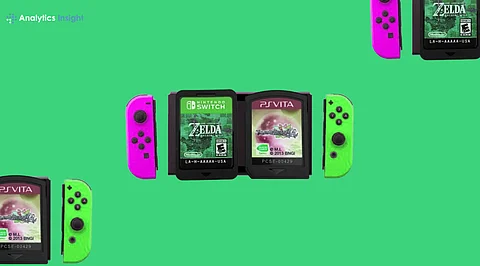

These two formats serve different purposes and offer different experiences when it comes to game ownership, storage, internet usage, and resale value as they bring unique experiences for the Nintendo Switch 2 along with differing physical aspects.
As Nintendo prepares for the launch of the Switch 2 console on June 5, 2025, the company is introducing two types of physical game formats: Game Cards and Game-Key Cards. These two formats serve different purposes and offer different experiences when it comes to game ownership, storage, internet usage, and resale value. Understanding the differences between these two types of cards is important for anyone planning to buy or play games on the new system.
Game Cards are the traditional cartridges that have been used for the original Nintendo Switch. For the Switch 2, these Game Cards continue to be a physical medium that contains the entire game data. They are inserted directly into the console and allow the game to be played instantly without the need to download anything.
Switch 2 Game Cards come with some upgrades compared to the previous generation. They now support up to 64GB of storage, which allows larger games to be stored directly on the card. These cards are also reported to have faster read speeds, which can lead to smoother gameplay and faster loading times.
Game-Key Cards are a new format introduced with the Switch 2. They may look similar to Game Cards, but they do not contain the game itself. Instead, they include a download key that allows the user to download the game from Nintendo’s servers. When a Game-Key Card is inserted into the Switch 2 console, the system connects to the internet, verifies the key, and then downloads the full game to the internal storage or memory card.
These cards are seen as a hybrid format—physical in appearance but digital in functionality.
The table below highlights the major differences:
Offline Play: Once inserted, games can be played immediately without needing an internet connection.
Resale Value: Since the entire game is on the card, it can be resold or shared with friends easily.
Collectability: Many fans enjoy building a physical library of games.
No Extra Storage Needed: The game runs directly from the card, so it doesn’t use up space on the console.
Higher Cost: Manufacturing a physical cartridge with full game data costs more.
Damage or Loss: Like any physical item, these can be lost or damaged.
Size Limitations: Some very large games may exceed 64GB, limiting what can be stored on one card.
Lower Cost: Without full game data, these cards are cheaper to produce and may lead to lower prices.
Digital Convenience with Physical Feel: Buyers still get something physical even if the game is downloaded.
Flexible Licensing: Some Game-Key Cards may allow resale, as the license is tied to the card itself and not to an account.
Disadvantages of Game-Key Cards
Internet Required: A stable internet connection is needed to download the full game, which may not be convenient for everyone.
Storage Usage: Downloaded games take up space on the console or microSD card.
Perceived Value: Some players feel that buying a key card is less satisfying than owning a real cartridge with full game data.
Several developers and publishers are already making decisions about which format to use for their upcoming games. Some major companies continue to support full Game Cards for larger and more important releases, especially where offline play is important or where a complete package is expected by players.
For example, the developer of Cyberpunk 2077, CD Projekt Red, has committed to using full 64GB Game Cards for its Switch 2 release. This ensures players can enjoy the entire game without needing any downloads, showing strong support for the physical format.
On the other hand, some budget games, indie titles, or special editions may come as Game-Key Cards. These allow publishers to reduce costs and still provide a physical product in stores, even if the game itself must be downloaded later.
Reactions to the new Game-Key Cards have been mixed. Some players appreciate the flexibility and potential for lower prices. Others are concerned about internet dependency, especially in regions where stable internet is not guaranteed.
Collectors and fans of physical games are especially vocal about the importance of traditional Game Cards. They argue that owning the full game physically ensures long-term access and avoids issues with digital servers or storage space.
Many players also point out that the value of Game-Key Cards may decrease over time, especially if the download servers are taken offline in the future. In contrast, a Game Card with the full game on it can still be used many years later.
The Nintendo Switch 2 offers a choice between two formats that reflect different priorities. Game Cards offer complete game ownership, offline play, and strong resale value, making them ideal for collectors and players who prefer a traditional gaming experience.
Game-Key Cards, while more dependent on internet access and internal storage, offer a cheaper and modernized solution that suits casual players or those who mostly play digitally anyway. The presence of both formats shows that Nintendo is aiming to serve all types of gamers in its next generation.
As the Switch 2 prepares to launch, the success of each format will depend on how developers, retailers, and players respond to their unique benefits and drawbacks. Over time, the balance between Game Cards and Game-Key Cards may shape how physical gaming evolves in the coming years.
